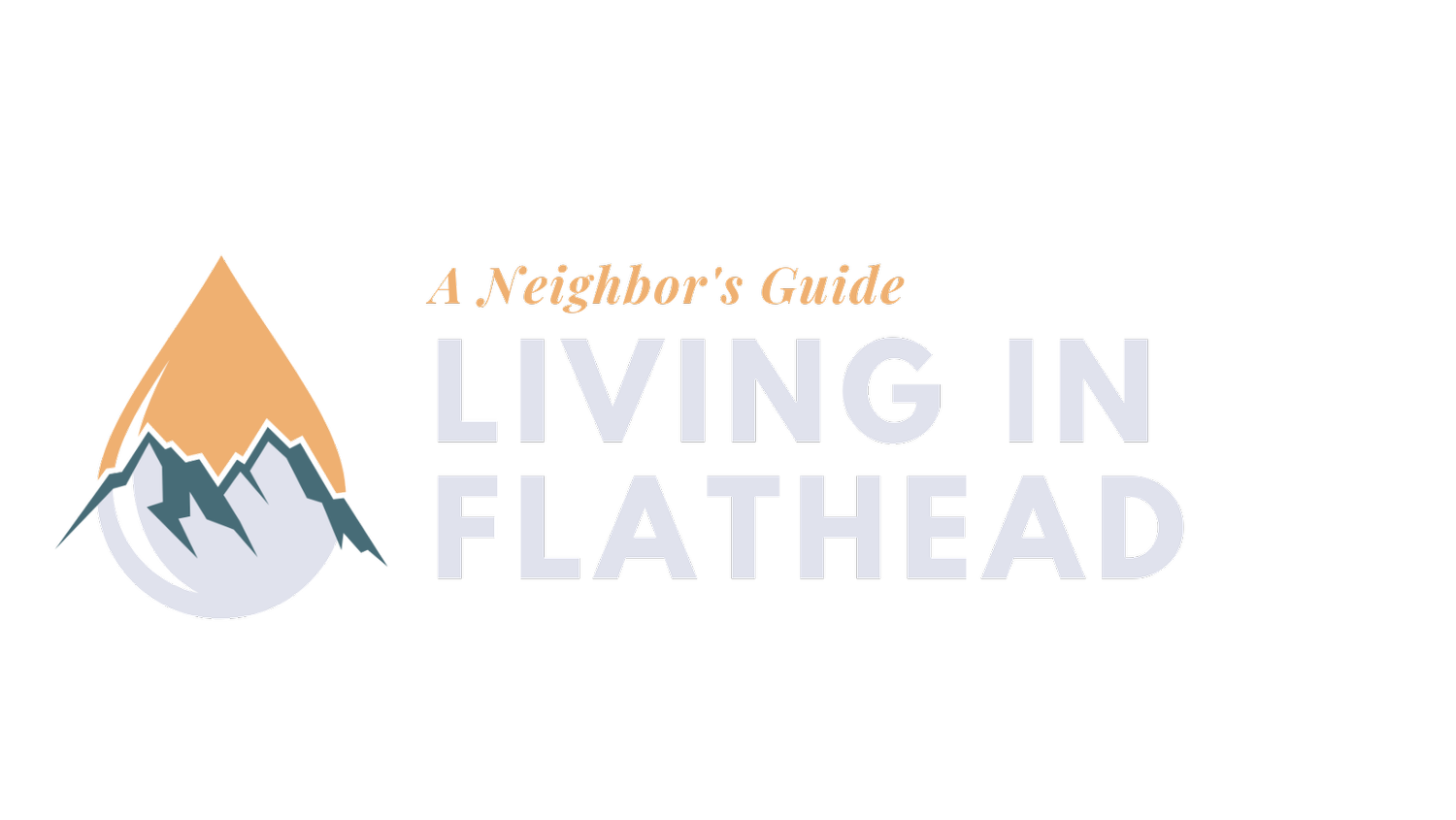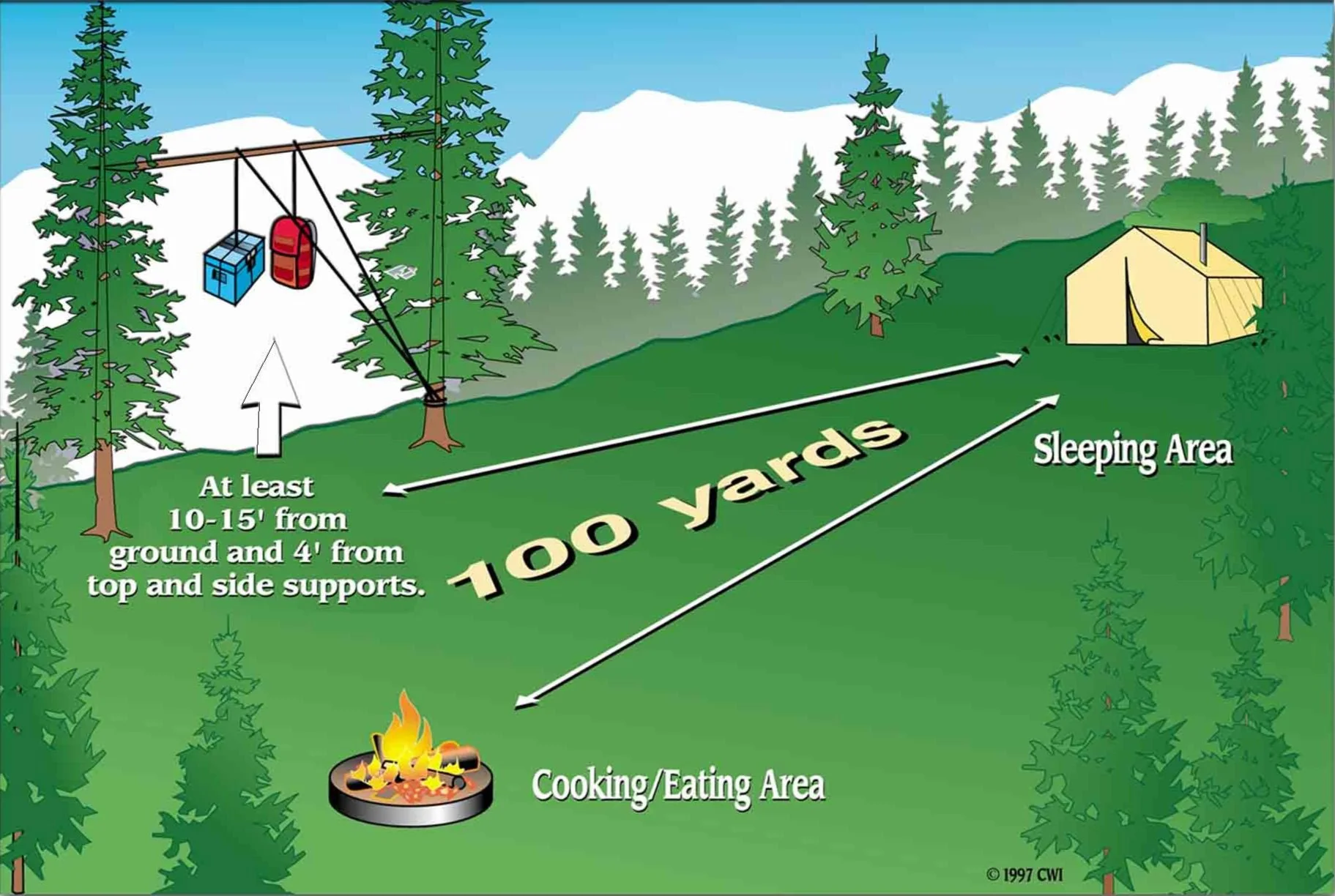
This is bear country.
Living in the Northern Rockies means living, working, and recreating alongside wildlife, including bears. Awareness and preparation allow you to enjoy the backcountry and ensure your property does not attract bears.
Living in Bear Country
Seeing a bear is a memorable experience, but the survival of these magnificent creatures greatly depends on your actions. It’s important in bear country to be bear aware at home, at work, and while recreating. Depending on where you are and what you’re doing, different strategies will help you stay safe, and bears wild.
ESSENTIAL TIPS TO AVOID BEAR CONFLICT AND SECURE ATTRACTANTS WHERE YOU LIVE, WORK, AND RECREATE:
-
Bears travel throughout Montana using their noses to find natural and non-natural food resource. While bears look for a diversity of food to eat, garbage is one of the highest points of conflict between people and bears.
Non-natural food resource: Garbage, bird seed, pet food, barbeque grills, compost, fruit trees, chickens and other small livestock (chickens to cows) and their feed, crops, beehives, dead and buried animals, and salt licks. These can attract bears to your property.
Natural food sources: Wild berries, grasses, insects, wildlife carcasses, pine nuts, fish, and much more. Be aware of your environment where bears might be feeding.
-
Keep bear attractants such as, garbage, dog food, and chicken feed in bear-resistant containers or inside a secured building, including firm doors and windows.
Call your private trash pickup service to inquire about bear-resistant trash cans. They can also be found at several hardware stores. In the Flathead Reservation, call your private trash pickup service, or, if you self-haul, call the Tribes CSKT NRD-Division of Fish, Wildlife office at 406-883-2888 (Monday-Thursday). For a list of bear-resistant products, check igbconline.org.
Install an electric fence around attractants, including your chicken coop, calving grounds, carcass piles, beehives, and compost. These are proven to be effective with bears.
Build electric fencing around fruit trees, or pick up fruit before it ripens, and let it ripen in a secure place. If you can’t pick or use all your fruit, check out Flathead Fruit Gleaning or Mission Valley Fruit Gleaning Facebook pages for a local fruit-picking group.
Feed birds when bears are hibernating. This is usually from November through March, but dates will vary depending on the weather on any given year.
Properly dispose of carcasses by contacting Flathead County Solid Waste at 406-758-5910.
Properly clean barbecue grills or burn off all greasy residue before you are finished.
-
Carry bear spray in an accessible location on you at all times, and know how to use it. Each person should carry a full can of EPA-certified bear spray, make sure it is not expired. Bear spray is an effective, nonlethal bear deterrent. It is important you know how to use it before you have to use it.
Stay alert and be ready to deploy bear spray in limited when hearing or visibility is limited.
Watch for bear sign like tracks, scat, scratch marks, bear hair, overturned rocks, and bear feeding sites.
Travel in groups and make noise. Loud noise is a simple, effective way to alert bears of your presence… Talk, yell, rock and roll ballads, showtunes, or classic old country tear jerkers.
Keep dogs on a leash to prevent spooking and triggering a chase from a bear.
Slow down when biking or running to avoid surprising a bear.
Avoid recreating at dawn and dusk when bears are most active.
-
Learn about bear activity before you go. Check out information at trail heads, visitors centers, and social media before you hike or hunt in an area.
Avoid camping near bear signs - tracks or scat.
Do not leave scented items in your tent, such as food, sunscreen, and toothpaste.
Cook and store any food and odorous items at least 100 yards away from your tent. Dispose of garbage in provided containers. Otherwise, take it with you and dispose of it properly. Never burn or bury your garbage.
Properly store food, garbage, pet food, and anything with a scent:
in a bear box, IGBC-certified bear resistant containers, locked car, hard-sided camper, or horse trailer. Coolers and plastic storage boxes are not bear resistant.
Suspend 10 feet up and 4 feet out from a vertical support like a tree.
Hunters, who move quietly, should be extra vigilant in bear country. If retrieving meat from a kill site, have a clear view of their surroundings at all times.
-
Bear spray is a highly effective, non-lethal deterrent, as it temporarily incapacitates a bear when sprayed properly. Always recreate with each person carrying a full can of EPA-certified bear spray and make sure it is not expired.
Keep the safety lock on unless you think you may need to discharge the spray. While outdoors, practice taking the lock off quickly so it’s second nature.
If you need to discharge your bear spray, remove the safety and spray before the bear reaches you so that it runs into the cloud of spray, about 2-3 seconds or until the bear is affected. Point slightly downwards, as a charging bear will be low to the ground.
Storage of food, garbage and other attractants is restricted during camping and other activities on Forest Service lands, including Flathead, Kootenai, and Lolo National Forests, to help prevent attracting grizzly bears. Review the Food Storage Order.
What do I do in a bear encounter?
-
Learn about bear activity before you go. Check out information at trail heads, visitors centers, and Facebook before you hike or hunt in an area.
Carry EPA-approved bear spray and KNOW HOW TO USE IT. Bear spray is an effective, nonlethal bear deterrent. It is important you know how to use it before you have to use it.Make noise. Loud noise is a simple, effective way to alert bears of your presence.
-
Carry bear spray in bear habitat.
Stay calm, most bear encounters do not result in an attack. Never run away. Running may trigger a bear to chase and you cannot outrun a bear.
If you see a bear, stop, and watch it so you can determine its behavior and have your bear spray ready. If the bear is uninterested, back away quietly and slowly.
If a bear approaches you and is agitated, remain still while speaking calmly until it moves away.
If a bear charges, stand your ground and use bear spray when within range (25-30 feet).
If the bear is making a defensive charge (defending cubs or a carcass), and you can’t deploy bear spray, drop to the ground face down, in a cannonball position, and play dead. Cover your neck and head with your hands.
If a bear follows or enters your tent, fight back aggressively.
Recommendations vary by the time of year, bear behavior, and more.
-
Bear spray is a highly effective, non-lethal deterrent, as it temporarily incapacitates a bear when sprayed properly. Always recreate with each person carrying a full can of EPA-certified bear spray and make sure it is not expired.
Keep the safety lock on unless you think you may need to discharge the spray. While outdoors, practice taking the lock off quickly so it’s second nature.
If you need to discharge your bear spray, remove the safety and spray before the bear reaches you so that it runs into the cloud of spray, about 2-3 seconds or until the bear is affected. Point slightly downwards, as a charging bear will be low to the ground.
Report an encounter:
Report any encounter where a bear displayed aggressive or defensive behavior or bear conflict where bear got into a food attractant by calling Montana Fish, Wildlife & Parks at (406) 752-5501; USDA Wildlife Services for bear-livestock conflicts at (406) 657-6464; or the Confederated Tribes at (406) 275-2774.
In an emergency, dial 9-1-1.
Resources
In the Flathead Reservation, call your private trash pickup service, or, if you self-haul, call the Tribes CSKT NRD-Division of Fish, Wildlife office at 406-883-2888 (Monday-Thursday).
Properly dispose of medium sized and large animals carcass (horses and other livestock). Visit Flathead County Solid Waste or call 406-758-5910 to see what animal carcass can be disposed of there.
Report bear-livestock conflicts by calling USDA Wildlife Services at 406-657-6464 or visit USDA Animal and Plant Health Inspection Service.
Report bear-conflict by calling Montana Fish, Wildlife & Parks at 406-752-5501 or visit their website.
For educational materials, toolkits, or advice to reduce conflict contact People and Carnivores at 406-587-3389 or info@peopleandcarnivores.org.
Vacation Rental Bear Safety Toolkit.
Learn about bear resistant products.




